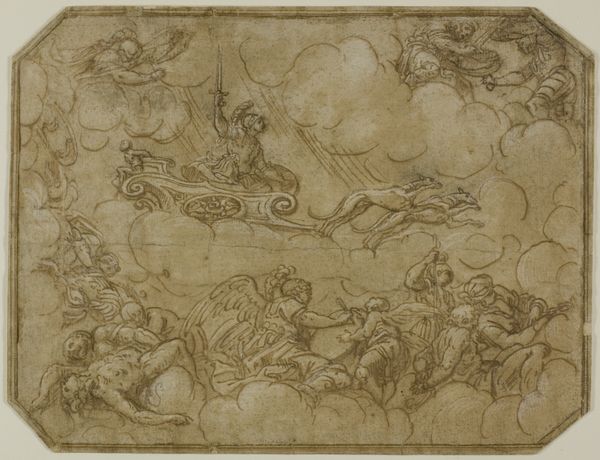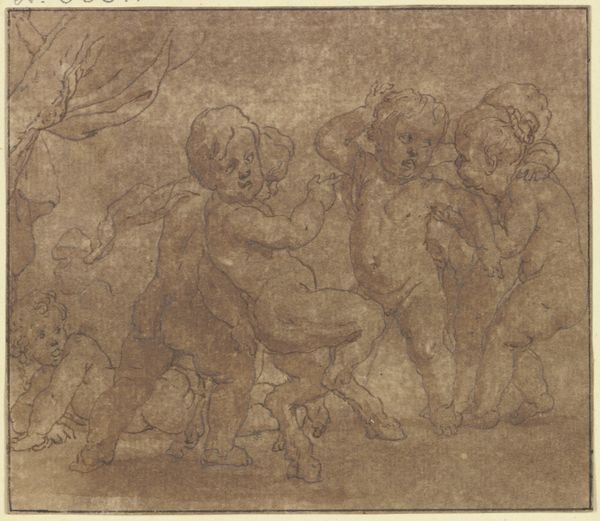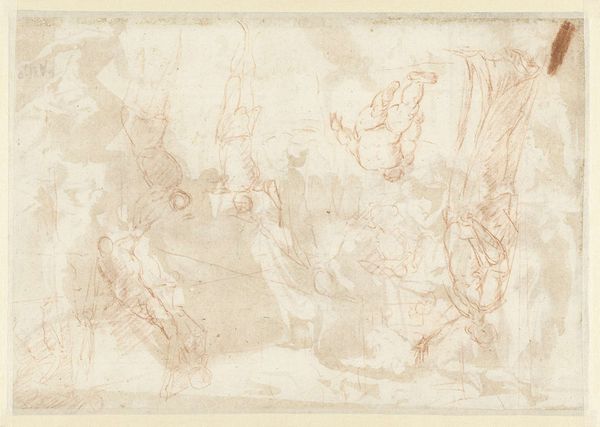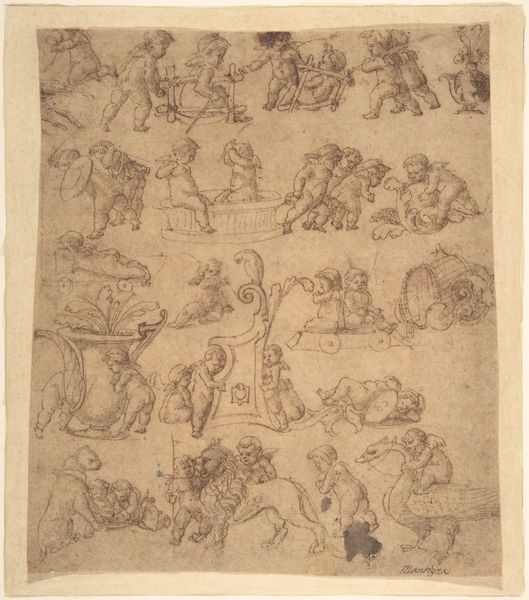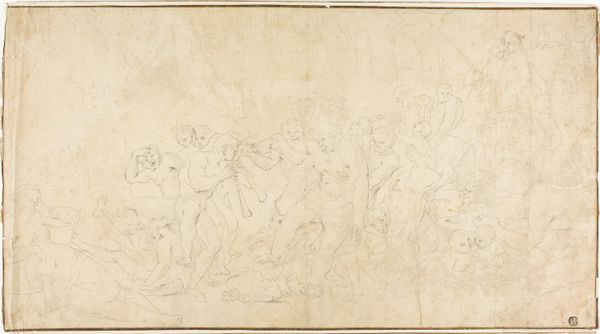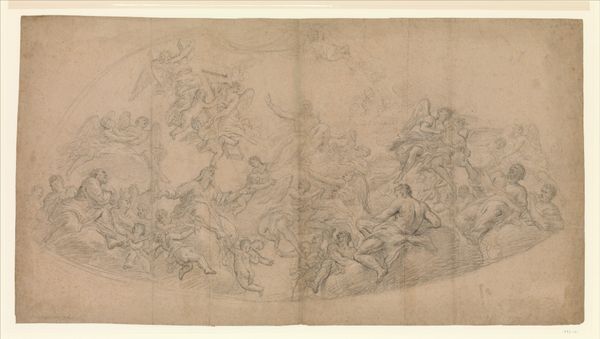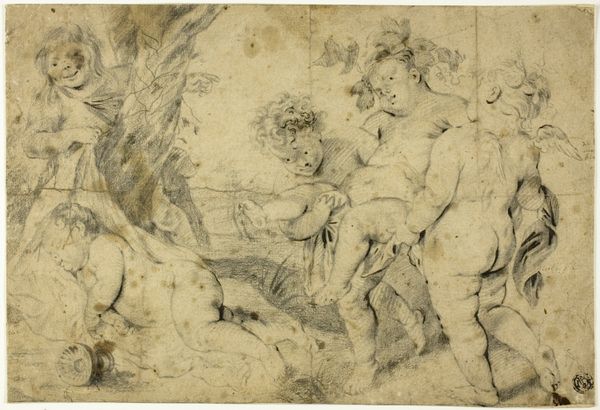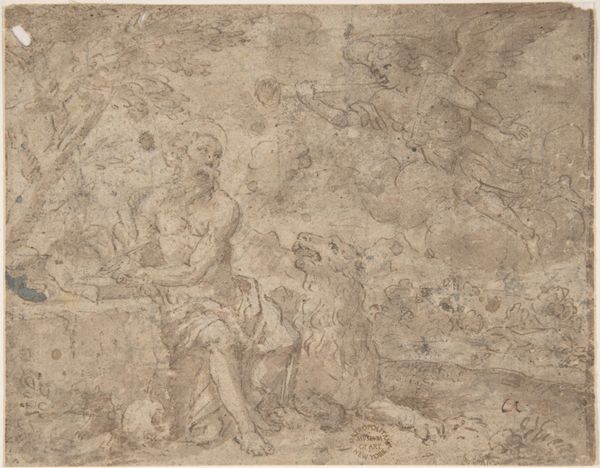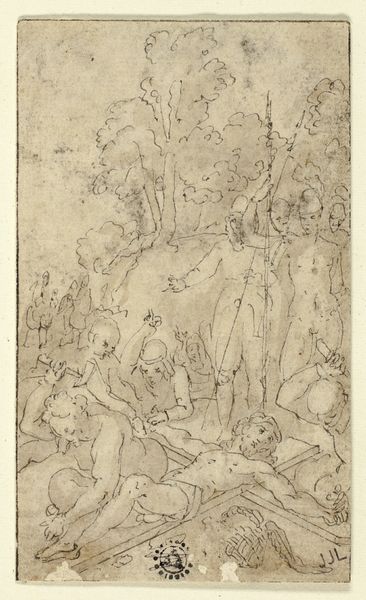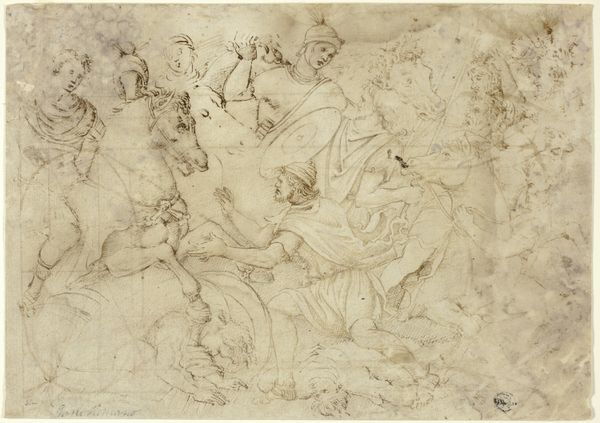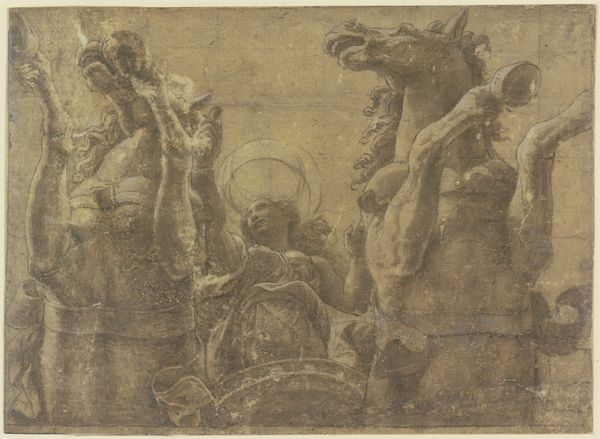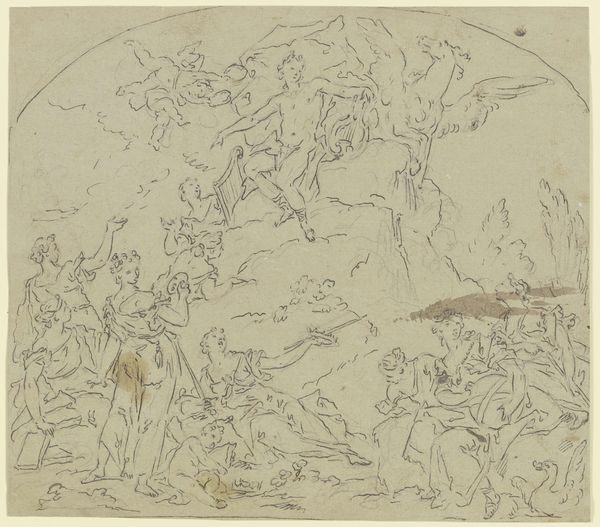
drawing, print, pencil
#
drawing
# print
#
figuration
#
11_renaissance
#
pencil
#
men
#
history-painting
#
italian-renaissance
#
nude
#
male-nude
Dimensions: 10-11/16 x 17-1/16 in. (27.2 x 43.4 cm)
Copyright: Public Domain
Curator: Here we have "The Last Judgment," a drawing from the late 16th century, attributed to Michelangelo. It resides here at the Metropolitan Museum of Art. The work is rendered in pencil and seems to also utilize some printmaking techniques on paper. Editor: Well, it’s immediately striking, the sheer density of figures packed into the composition creates a sense of both chaos and overwhelming scale. There’s almost a blurring of the earthly and divine realms within it. Curator: Precisely, Michelangelo masterfully constructs the composition using dynamic, swirling lines, which creates a visual vortex drawing the viewer's eye across the entire surface. We see a history-painting theme explored through many male nudes and their detailed, individualized poses—typical for that period and the artist. Editor: It also draws our attention to the physicality of image-making. You can see the hand of the artist laboring, the repeated marks. Given the preparatory nature of a drawing like this, it makes you think about the processes, the sheer volume of effort put in before a finalized fresco, if this would have become one. What kind of workshops produced such a massive vision? Curator: Consider also that the drawing's materiality informs its content: the pencil's ability to capture delicate gradations in tone allows for nuanced rendering of musculature and emotion, all crucial components in evoking the gravitas of the Last Judgement theme. Look closely, the forms have a sense of being liberated as if rising above the surface itself. Editor: The act of reproduction here is key to me; prints democratize art, disseminate ideas. The ability to circulate Michelangelo's vision widely would influence artists, challenge perceptions of beauty, and more than likely shift devotional practices in sometimes radical new ways. I mean, just think of the consumption. Curator: Your point regarding circulation is well-taken. Through rigorous compositional balance and dynamic figuration, a clear visual hierarchy has also been put forward. I notice it communicates complex theological concepts to audiences beyond the immediate physical context of production, the Met for instance. Editor: Yes, in summary, thinking of the labor invested and the raw materials mobilized alongside the intent behind such imagery shows art's deep engagement with social, economic and theological spheres of its era, but beyond it as well, no? Curator: Indeed. It highlights the complex relationship between an artwork's intrinsic properties, its content, its methods and how audiences beyond have and continue to interpret that.
Comments
No comments
Be the first to comment and join the conversation on the ultimate creative platform.
